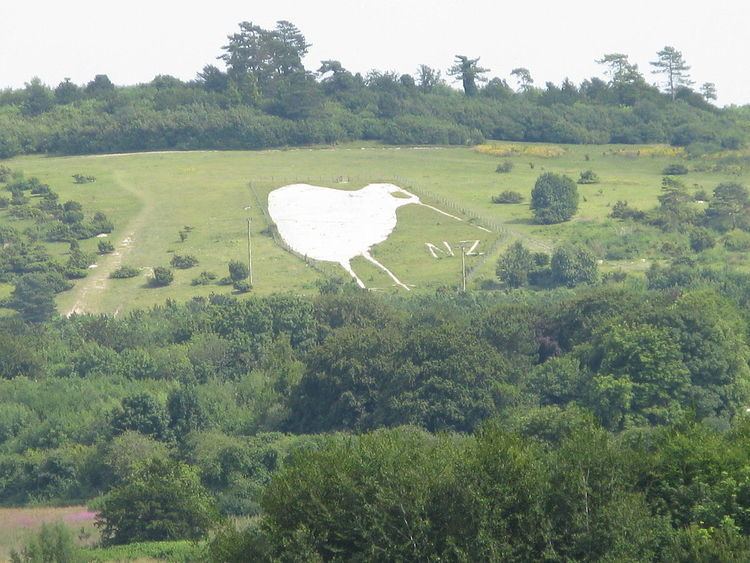 | ||
Address 51°11'38. 1°42'54., 9 4th Ave, Hull HU6 9NP, United Kingdom | ||
The bulford kiwi
The Bulford Kiwi is an immense drawing of a kiwi carved in the chalk on Beacon Hill above the military town of Bulford on the Salisbury Plain in Wiltshire, England. It was created by New Zealand soldiers awaiting repatriation following the end of World War I.
Contents
It is one of the few hill figures in Wiltshire not to be either a white horse or a military badge.
History
The Kiwi was constructed on Beacon Hill overlooking Sling Camp (now gone), part of Bulford Camp, during the occupation of the Camp by New Zealand troops since June 1916.
After the war was over the troops were eager to return home, but no troop ships were available. In the wake of riots by disaffected New Zealanders, officers decided that the troops should be kept busy carving an enormous Kiwi into the chalk of the hill. This was done in February and March 1919, by the Canterbury and Otago Engineers Battalions.
The Kiwi is cut out of the chalk hillside, and stands out in contrast from the surrounding vegetation.
The design was executed by Sergeant-Major Percy Cecil Blenkarne of the Education Staff from a sketch of a stuffed kiwi specimen in the British Museum. The site was surveyed and the design extended on to the site by Sergeant-Major V.T. Low, NZE of the Education Staff.
Size
After the war
In the years after the Kiwi's creation, the Kiwi Polish Company maintained the Kiwi through their offices in London, employing local villagers to do the work. Although it had "little if any advertising value [for us]"; they explained their interest in its upkeep as its being a memorial to the New Zealand troops.
During World War II, the Kiwi was camouflaged with leaf mould, out of concerns that German bombers would use it as a navigation marker during their raids over Britain. In 1948, the leaf mould was removed by local Boy Scouts, and fresh chalk was added. The Scout troop subsequently renamed themselves in the Kiwi's honour.
In the early 1950s, Blenkarne negotiated for the Kiwi to be maintained by the British Army’s 3 (UK) Divisional Headquarters and Signal Regiment following on from the work done by 249 Signal Squadron. 3 DHQ&SR was part of the 3rd Infantry Division.
As of 2007, the Kiwi is maintained by the Ministry of Defence.
Views
Views of the kiwi are largely obscured due to straight-ahead views being only within the camp. The closest the general public can get to it year-round is Tidworth Road, which passes the kiwi from the left at a skewed angle. Very distorted views of the kiwi from the right of the hill can be seen from Woodhenge and near Stonehenge.
Nearby
There have been several military hill figures in Wiltshire, though this is the only one not to be of a badge. Roughly 20 miles from the Bulford Kiwi are the Fovant Badges, a group of 8 military badges cut mostly by camps in World War I. There used to be more badges on the hill, and until 2005, there were two more nearby at Sutton Mandeville and the outline of Australia also nearby in Compton Chamberlayne. Another nearby military badge is Lamb Down Military Badge near Codford St. Mary.
